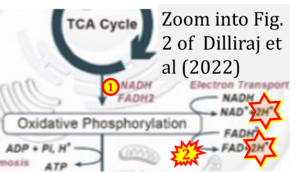Dilliraj 2022 Nutrients
| Dilliraj LN, Schiuma G, Lara D, Strazzabosco G, Clement J, Giovannini P, Trapella C, Narducci M, Rizzo R (2022) The evolution of ketosis: potential impact on clinical conditions. Nutrients 14:3613. https://doi.org/10.3390/nu14173613 |
Dilliraj LN, Schiuma G, Lara D, Strazzabosco G, Clement J, Giovannini P, Trapella C, Narducci M, Rizzo R (2022) Nutrients
Abstract: Ketone bodies are small compounds derived from fatty acids that behave as an alternative mitochondrial energy source when insulin levels are low, such as during fasting or strenuous exercise. In addition to the metabolic function of ketone bodies, they also have several signaling functions separate from energy production. In this perspective, we review the main current data referring to ketone bodies in correlation with nutrition and metabolic pathways as well as to the signaling functions and the potential impact on clinical conditions. Data were selected following eligibility criteria accordingly to the reviewed topic. We used a set of electronic databases (Medline/PubMed, Scopus, Web of Sciences (WOS), Cochrane Library) for a systematic search until July 2022 using MeSH keywords/terms (i.e., ketone bodies, BHB, acetoacetate, inflammation, antioxidant, etc.). The literature data reported in this review need confirmation with consistent clinical trials that might validate the results obtained in in vitro and in vivo in animal models. However, the data on exogenous ketone consumption and the effect on the ketone bodies' brain uptake and metabolism might spur the research to define the acute and chronic effects of ketone bodies in humans and pursue the possible implication in the prevention and treatment of human diseases. Therefore, additional studies are required to examine the potential systemic and metabolic consequences of ketone bodies.
• Bioblast editor: Gnaiger E
Correction: FADH2 and Complex II
- FADH2 is shown as the substrate feeding electrons into Complex II (CII). This is wrong and requires correction - for details see Gnaiger (2024).
- Gnaiger E (2024) Complex II ambiguities ― FADH2 in the electron transfer system. J Biol Chem 300:105470. https://doi.org/10.1016/j.jbc.2023.105470 - »Bioblast link«
Hydrogen ion ambiguities in the electron transfer system
Communicated by Gnaiger E (2023-10-08) last update 2023-11-10
- Electron (e-) transfer linked to hydrogen ion (hydron; H+) transfer is a fundamental concept in the field of bioenergetics, critical for understanding redox-coupled energy transformations.
- However, the current literature contains inconsistencies regarding H+ formation on the negative side of bioenergetic membranes, such as the matrix side of the mitochondrial inner membrane, when NADH is oxidized during oxidative phosphorylation (OXPHOS). Ambiguities arise when examining the oxidation of NADH by respiratory Complex I or succinate by Complex II.
- Oxidation of NADH or succinate involves a two-electron transfer of 2{H++e-} to FMN or FAD, respectively. Figures indicating a single electron e- transferred from NADH or succinate lack accuracy.
- The oxidized NAD+ is distinguished from NAD indicating nicotinamide adenine dinucleotide independent of oxidation state.
- NADH + H+ → NAD+ +2{H++e-} is the oxidation half-reaction in this H+-linked electron transfer represented as 2{H++e-} (Gnaiger 2023). Putative H+ formation shown as NADH → NAD+ + H+ conflicts with chemiosmotic coupling stoichiometries between H+ translocation across the coupling membrane and electron transfer to oxygen. Ensuring clarity in this complex field is imperative to tackle the apparent ambiguity crisis and prevent confusion, particularly in light of the increasing number of interdisciplinary publications on bioenergetics concerning diagnostic and clinical applications of OXPHOS analysis.




